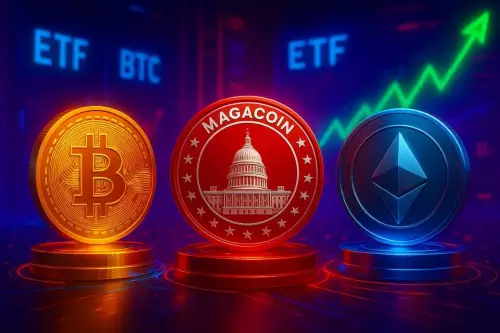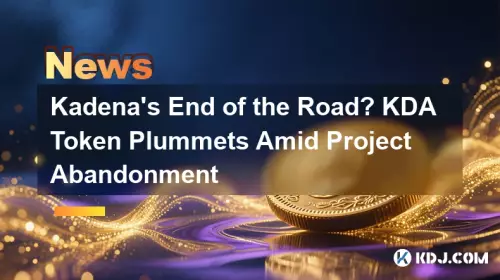 |
|
 |
|
 |
|
 |
|
 |
|
 |
|
 |
|
 |
|
 |
|
 |
|
 |
|
 |
|
 |
|
 |
|
 |
|
DeFi 리더의 비즈니스 모델과 유사한 자동화된 마켓 메이커의 비즈니스 모델의 지속 가능성에 대한 심각한 질문이 남아 있습니다.

Uniswap is one of the largest and most influential decentralized exchanges (DEXs). It launched in November 2018 during Devcon 4, where founder Hayden Adams revealed the platform's V1. In under six months, Uniswap already had $10 million locked in its liquidity pools, securing the DEX with valuable seed funds as it expanded and upgraded its protocol.
Uniswap은 가장 크고 영향력 있는 분산형 거래소(DEX) 중 하나입니다. 2018년 11월 Devcon 4에서 출시되었으며 창립자 Hayden Adams가 플랫폼의 V1을 공개했습니다. 6개월도 안 되어 Uniswap은 이미 유동성 풀에 1,000만 달러를 확보했으며, 프로토콜을 확장하고 업그레이드하면서 귀중한 시드 자금으로 DEX를 확보했습니다.
However, serious questions remain about the sustainability of Uniswap's business model and those of similar automated market makers (AMMs). From a regular user's perspective, Uniswap and AMMs generally provide a convenient way to trade a wide variety of tokens. On the flip side, liquidity providers (LPs) typically fail to retain profits due to the misleadingly-named concept of impermanent loss.
그러나 Uniswap의 비즈니스 모델과 유사한 AMM(Automated Market Maker)의 비즈니스 모델의 지속 가능성에 대해서는 심각한 의문이 남아 있습니다. 일반 사용자의 관점에서 보면 Uniswap과 AMM은 일반적으로 다양한 토큰을 거래할 수 있는 편리한 방법을 제공합니다. 반면, 유동성 공급자(LP)는 일반적으로 비영구적 손실이라는 오해의 소지가 있는 개념으로 인해 수익을 유지하지 못합니다.
Even if advertised APRs (annual percentage rates) aren't misleading and are distributed to LPs, a study going as far back as 2021 revealed that more than half of Uniswap's LPs were losing money due to impermanent loss, which means they would have been better off just holding the tokens independently and not putting them to work at all. This is because the rate of impermanent loss, caused by volatile price fluctuations, is usually higher than the APRs rewarded to LPs.
광고된 APR(연간 백분율)이 오해의 소지가 없고 LP에 배포된다고 해도 2021년까지 거슬러 올라가는 연구에 따르면 Uniswap의 LP 중 절반 이상이 비영구적 손실로 인해 손실을 입고 있는 것으로 나타났습니다. 즉, 더 나았을 것입니다. 토큰을 독립적으로 보유하고 전혀 작동하지 않는 것뿐입니다. 이는 변동성이 큰 가격 변동으로 인한 비영구적 손실 비율이 일반적으로 LP에 보상되는 APR보다 높기 때문입니다.
Things only got worse when Uniswap transitioned to a concentrated liquidity model, which aimed to improve capital efficiency by offering liquidity in specific price ranges chosen by the user. This removed the 50/50 balance in trades, benefiting traders but making it so that LPs are still actively losing money from taking the suboptimal side of every trade.
Uniswap이 사용자가 선택한 특정 가격 범위에서 유동성을 제공하여 자본 효율성을 향상시키는 것을 목표로 하는 집중 유동성 모델로 전환했을 때 상황은 더욱 악화되었습니다. 이로 인해 거래에서 50/50 잔액이 제거되어 거래자에게 이익이 되었지만 LP는 모든 거래에서 차선책을 취함으로써 여전히 적극적으로 돈을 잃고 있습니다.
Let's take a look at the UNI token itself, which somehow does not generate revenue despite a valuation exceeding $6 billion. With no fee-share coming from LPs, the protocol itself earns nothing from its usage. Since UNI holders are unable to stake their tokens to earn rewards in the form of ETH, they gain no direct financial benefit from the value they drive to Ethereum.
60억 달러를 넘는 가치 평가에도 불구하고 어떻게든 수익을 창출하지 못하는 UNI 토큰 자체를 살펴보겠습니다. LP에서 발생하는 수수료 공유가 없으므로 프로토콜 자체는 사용으로 인해 아무것도 얻지 못합니다. UNI 보유자는 ETH 형태의 보상을 얻기 위해 토큰을 스테이킹할 수 없기 때문에 Ethereum에 창출하는 가치로부터 직접적인 금전적 이익을 얻지 못합니다.
The bottom line is that LPs are unable to get any profit because there is simply no profit to be made. And if LPs aren’t even profitable, it is unlikely there will ever be any profit to share.
결론은 단순히 수익을 낼 수 있는 것이 없기 때문에 LP는 수익을 얻을 수 없다는 것입니다. 그리고 LP가 수익을 내지 못한다면 공유할 수익도 없을 가능성이 높습니다.
So, this raises the question: How can a sector survive, let alone thrive if investors regularly lose money?
따라서 이는 다음과 같은 질문을 제기합니다. 투자자가 정기적으로 돈을 잃으면 어떻게 부문이 번영할 수 있고 살아남을 수 있습니까?
We shouldn't underestimate how big of a problem profitability is for liquidity providers. DeFi cannot effectively function without them, and their role in strengthening crypto as a whole shouldn't be taken for granted. A sign that investors are waking up to this problem can be seen from lending protocols surpassing DEXs in total value locked (TVL).
유동성 공급자에게 수익성이 얼마나 큰 문제인지 과소평가해서는 안 됩니다. DeFi는 그것들 없이는 효과적으로 작동할 수 없으며, 암호화폐를 전체적으로 강화하는 역할을 당연하게 여겨서는 안 됩니다. 투자자들이 이 문제를 인식하고 있다는 신호는 TVL(총 가치 고정 가치)에서 DEX를 능가하는 대출 프로토콜에서 볼 수 있습니다.
This should sound the alarm for all of DeFi. If LPs pull their funds en masse from DeFi protocols in favor of more traditionally stable asset classes, it would quickly send ripple effects across the entire crypto industry. So how can DEXs be improved to enable more traders and liquidity providers to thrive while simultaneously enhancing capital efficiency?
이는 DeFi 전체에 경종을 울려야 합니다. LP가 전통적으로 안정적인 자산 클래스를 선호하여 DeFi 프로토콜에서 자금을 대량으로 인출한다면 전체 암호화폐 산업에 빠르게 파급 효과를 보낼 것입니다. 그렇다면 더 많은 트레이더와 유동성 공급자가 번창할 수 있도록 동시에 자본 효율성을 향상시키기 위해 DEX를 어떻게 개선할 수 있을까요?
Crypto's overall idea is to reflect, but also replace, traditional finance through maximum decentralization. However, capital inefficiency within the DeFi sector doesn't allow that to happen, putting it at a clear disadvantage against centralized platforms
Crypto의 전반적인 아이디어는 최대의 분산화를 통해 전통적인 금융을 반영하고 대체하는 것입니다. 그러나 DeFi 부문의 자본 비효율성은 이를 허용하지 않으며 중앙 집중식 플랫폼에 비해 분명한 불리함을 안겨줍니다.
In traditional finance, when one deposits money into a savings account, one can expect a reliable ROI from providing liquidity to the institution. But banks carry an implicit trust, whether through consumer protections or centuries of experience in managing assets and navigating volatile markets. DeFi platforms don’t have that same degree of investor confidence. Most DEXs, simply put, don’t have the experience to capture value from their liquidity successfully.
전통적인 금융에서는 저축 계좌에 돈을 입금하면 기관에 유동성을 제공함으로써 안정적인 ROI를 기대할 수 있습니다. 그러나 은행은 소비자 보호를 통해든 자산 관리 및 변동성 시장 탐색에 대한 수세기에 걸친 경험을 통해 암묵적인 신뢰를 유지합니다. DeFi 플랫폼은 그만큼의 투자자 신뢰를 갖고 있지 않습니다. 간단히 말해서 대부분의 DEX는 유동성에서 가치를 성공적으로 포착한 경험이 없습니다.
The main problem with Uniswap and similar AMM models is that they never really learned how to profit from the liquidity they collect. Countering this requires DEXs to implement innovative incentivizing mechanisms and boost their transparency to encourage investor and trader participation.
Uniswap 및 유사한 AMM 모델의 주요 문제점은 수집한 유동성으로부터 이익을 얻는 방법을 실제로 배우지 못했다는 것입니다. 이에 대응하려면 DEX가 혁신적인 인센티브 메커니즘을 구현하고 투명성을 높여 투자자와 거래자의 참여를 장려해야 합니다.
Enhancing transparency, tracking impermanent loss, and setting APRs accordingly is paramount to making liquidity providers feel secure and incentivized. Centralized exchanges such as Coinbase and Binance supplement their income by providing infrastructure services and earning interest from token custody. Perhaps, DEXs can evolve to the point where liquidity can be hypothecated to earn both chain security incentives and trade fees simultaneously.
투명성을 높이고, 비영구적 손실을 추적하고, 이에 따라 APR을 설정하는 것은 유동성 공급자가 안전하고 인센티브를 받는 느낌을 받는 데 가장 중요합니다. Coinbase 및 Binance와 같은 중앙 집중식 거래소는 인프라 서비스를 제공하고 토큰 보관을 통해 이자를 얻음으로써 수입을 보충합니다. 아마도 DEX는 체인 보안 인센티브와 거래 수수료를 동시에 얻기 위해 유동성을 가정할 수 있는 지점까지 발전할 수 있습니다.
DeFi's novelty holds tremendous promise. By removing third-party intermediaries, DeFi enables investors to earn fees from the liquidity they provide to a certain protocol — a revolutionary concept that even 10 years ago would have been hard to wrap one's head around. However, capital inefficiencies and inexperience with the nature of markets call for new approaches to ensure that decentralized systems don't squander the momentum they’ve recently enjoyed. Addressing these challenges now can help bolster all DEXs leading to a stronger and more resilient DeFi.
DeFi의 참신함은 엄청난 가능성을 가지고 있습니다. DeFi는 제3자 중개자를 제거함으로써 투자자가 특정 프로토콜에 제공하는 유동성으로부터 수수료를 얻을 수 있도록 합니다. 이는 10년 전만 해도 이해하기 어려웠던 혁신적인 개념입니다. 그러나 시장 특성에 대한 자본 비효율성과 경험 부족으로 인해 분산형 시스템이 최근 누리고 있는 모멘텀을 낭비하지 않도록 보장하는 새로운 접근 방식이 필요합니다. 이제 이러한 과제를 해결하면 모든 DEX를 강화하여 더욱 강력하고 탄력적인 DeFi로 이어질 수 있습니다.
부인 성명:info@kdj.com
제공된 정보는 거래 조언이 아닙니다. kdj.com은 이 기사에 제공된 정보를 기반으로 이루어진 투자에 대해 어떠한 책임도 지지 않습니다. 암호화폐는 변동성이 매우 높으므로 철저한 조사 후 신중하게 투자하는 것이 좋습니다!
본 웹사이트에 사용된 내용이 귀하의 저작권을 침해한다고 판단되는 경우, 즉시 당사(info@kdj.com)로 연락주시면 즉시 삭제하도록 하겠습니다.






























































